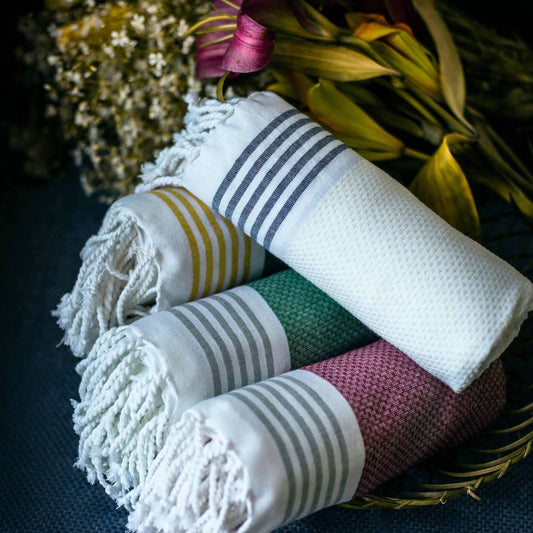Introduction to Organic Textile
Organic textiles are made from natural materials grown without pesticides or synthetic fertilizers. They are better for the environment and safer for your skin, as they do not contain harmful chemicals. Organic cotton, bamboo, hemp, and linen are commonly used to make organic textiles. These materials are grown using eco-friendly practices that promote sustainability and biodiversity. Organic textiles play a vital role in reducing the environmental impact of the home textiles industry.

Benefits of Organic Textiles for Home
Organic textiles for your home offer numerous benefits. Using organic materials means fewer harmful chemicals are used in production, making them better for the environment. These textiles are also more gentle on your skin, reducing the risk of allergies or skin irritations. Additionally, organic textiles are often of higher quality, making them more durable and long-lasting. By choosing organic textiles for your home, you are not only making a healthier choice for yourself but also supporting sustainable and environmentally-friendly practices in the textile industry.
Sustainability in Home Textiles
Sustainability in home textiles is becoming more important as people seek eco-friendly options for their living spaces. Organic textiles are leading this movement by incorporating sustainable practices in the production of materials for home furnishings. Organic cotton, linen, and bamboo are commonly used materials in home textiles that are grown without harmful chemicals. These sustainable options not only benefit the environment but also promote healthier living environments for consumers.
Organic Textile Certification
Organic textile certification guarantees that the materials used meet strict organic standards. Look for certifications like GOTS and OEKO-TEX when shopping for organic textiles as they ensure the products are free from harmful chemicals and produced sustainably. GOTS certification ensures the entire textile supply chain adheres to organic standards, from farming to finished product. On the other hand, OEKO-TEX certification focuses on ensuring the materials are free from harmful substances. These certifications provide consumers with confidence in the quality and sustainability of their organic textile purchases.
Different Types of Organic Textiles
Organic textiles for home use come in various types, offering both comfort and sustainability. Here are some common options:
1. Cotton: Soft and breathable, organic cotton is a popular choice for bed sheets and towels.
2. Linen: Known for its durability, linen is a natural fiber that becomes softer with each wash, making it ideal for bedding and curtains.
3. Hemp: Hemp textiles are sturdy and eco-friendly, suitable for items like upholstery and rugs.
4. Bamboo: A fast-growing and renewable resource, bamboo fabric is antimicrobial and moisture-wicking, perfect for bed linens and towels.
Each type of organic textile brings its unique qualities to enhance your home textiles while contributing to a greener environment.
Impact of Organic Textiles on Environment
Organic textiles are beneficial for the environment as they are made from natural materials that have been grown without harmful chemicals. This means that the production process of organic textiles has a lower impact on the environment compared to conventional textiles. Organic farming practices help in preserving soil fertility, reducing water contamination, and promoting biodiversity. Choosing organic textiles for your home can contribute to a sustainable and eco-friendly lifestyle.
Organic Textile Production Process
Organic textiles are produced using natural materials like cotton, linen, or wool. These materials are grown without the use of synthetic chemicals like pesticides or fertilizers. The production process of organic textiles involves steps such as sourcing organic fibers, spinning them into yarn, weaving or knitting the fabric, dyeing with natural pigments if needed, and finishing the material without harsh chemicals. Choosing organic textiles for your home can help reduce your exposure to harmful substances and support sustainable practices in the textile industry.
Trends in Organic Home Textiles
Organic home textiles are becoming increasingly popular due to a growing interest in sustainable and eco-friendly products. Natural materials like organic cotton, linen, and bamboo are being used to make bedding, towels, and other home textiles. Consumers are drawn to these products because they are free from harmful chemicals and pesticides, making them better for both the environment and personal health. The trend towards organic home textiles reflects a broader shift towards more environmentally-conscious purchasing habits in the home goods industry.
Comparison: Organic vs. Conventional Textiles
Organic textiles are made from natural materials grown without the use of harmful chemicals, making them eco-friendly and safer for the environment. Conventional textiles, on the other hand, involve the use of synthetic materials and chemicals during production. Organic textiles are known for being softer and more breathable compared to conventional textiles. They are also hypoallergenic, making them a great choice for those with sensitive skin. Conventional textiles may be more affordable but often contain pesticides and other chemicals that could be harmful to your health in the long run. When choosing between the two, consider factors like sustainability, comfort, and your health to make an informed decision.
Embracing Organic Textiles in Your Home
Organic textiles offer a natural and eco-friendly option for your home. By choosing organic textiles, you are supporting sustainable practices and reducing your exposure to harmful chemicals. Embrace organic textiles in your home to create a healthier and more environmentally conscious living space.










